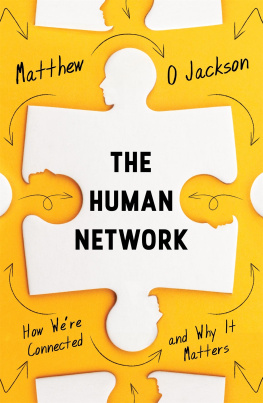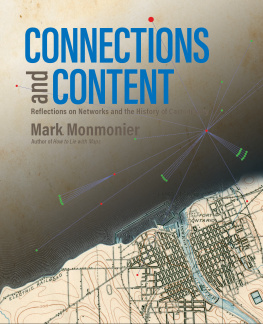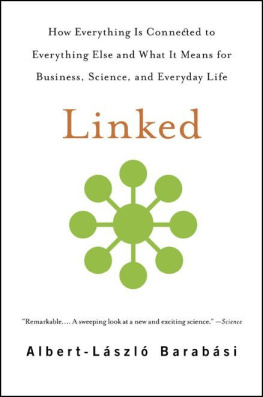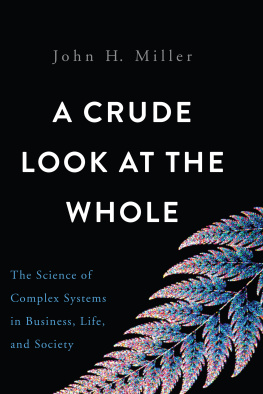We would both like to thank Jon Norton and John Thirlwell for their thoughts, ideas and observations, and we should also like to thank everyone at Harriman House for their help and encouragement.
Introduction
When you can measure what you are speaking about, and express it in numbers, you know something about it; but when you cannot express it in numbers, your knowledge is of a meagre and unsatisfactory kind; it may be the beginning of knowledge, but you have scarcely, in your thoughts, advanced to the stage of science, whatever the matter may be.
William Thomson, Lord Kelvin, mathematical physicist and engineer (18241907)
People interact with each other in many different ways, and so can be grouped under many general headings: by salary, by religion, by race, by age, by sex, by political allegiance. Various social studies have arisen to study and understand these groupings.
Economics examines people as wealth creators, by studying how they produce, distribute and consume goods and services. Social welfare examines peoples wellbeing and attempts to provide support to raise all citizens to an acceptable level. Political science examines how people in states, corporations and other organisations make collective decisions, covering the regulation of group affairs and the methods and tactics used to formulate and apply policy.
The interactions between people and between overlapping groups are complex. They have been investigated throughout history by philosophers and artists from Plato, Luther, Shakespeare, Dickens, Hogarth and Gillray in the past, to the commentators, satirists and cartoonists of today.
In the 20th century a collection of disciplines often called social sciences developed to match these generally unstructured comments. These sciences examine the relations within and between groups of people in a formal, quantitative way, but the complex behaviour of the humans at their heart has meant that progress has been slow. Until now, they have always lagged behind the physical sciences, and while some developments have borne fruit, there have been many false dawns. Now the sciences are maturing as they draw away from the simplistic models that were borrowed from the physical sciences.
This book describes the development of the social sciences and the external events that shaped them. It warns of the pitfalls that can arise from making the wrong sort of simplifications, but more importantly it introduces exciting new approaches that are as yet unfamiliar to the general practitioner.
1. Social Sciences from Physical Sciences
Classical Physics Led the Way
Initially science and mathematics concentrated on readily observable phenomena, because they were easily understood and delivered practical results. From the days of the Enlightenment in the 18th century, all effort was directed to this end, so that by the start of the 20th century, physicists and mathematicians believed that they had solved the natural world.
Lord Kelvin, the respected scientist and engineer, reportedly said, There is nothing new to be discovered in physics now. All that remains is more and more precise measurement. Or as Bill Bryson rendered it in more colloquial style, If a thing could be oscillated, accelerated, perturbed, distilled, combined, weighed, or made gaseous they had done it, and in the process produced a body of universal laws The whole world clanged and chuffed with the machinery and instruments that their ingenuity had produced.
Meanwhile social scientists began to look at the physical sciences to see if its theories and techniques could be adapted to their needs. Perhaps they were stung by the comment of Kelvin that without measurement there is no science.
Economics followed
One aspiring social scientist was the Frenchman Lon Walras, whose work Elements of Pure Economics (1901), examines how prices rise when supply falls or demand rises, and fall when supply rises or demand falls. This explanation of the balance between supply and demand established his place as the father of general equilibrium theory.
His borrowing from the physical sciences can be gauged from his correspondence with Henri Poincar, on the possibility of ascribing an absolute measure to something which is ethically, or behaviourally significant. Poincar was a giant in the fields of both pure and applied mathematics, and his work was to challenge the classical foundations of mechanical science. He saw his mathematical work in economics and finance as peripheral, but he did take the time to exchange letters with Walras and made the following extremely pertinent point:
You, on your side, regard men as infinitely self-seeking and infinitely clairvoyant. The first hypothesis can be admitted as a first approximation, but the second hypothesis calls, perhaps, for some reservations.
In other words, Poincar accepted that generally speaking mans acts are consistent with that selfish group homo economicus (something now challenged by sociologists). Meanwhile, as with many commentators today, he could not accept equilibrium theorys other necessary assumption: that all market participants have full knowledge of all of the relevant facts. His doubt on this point highlights the core problem with economics: the difficulty of defining the typical human.
Classical Physics Fails at the Edges
After the revolutionary work of Isaac Newton in the 17th century, classical physics had been largely a matter of refinement until the 20th: broadening its reach; confirming theories by experiment; making more precise measurements. Theories in physics were based around assumptions of the average behaviour of very large numbers of identical microscopic elements.
By the turn of the 20th century scientists were pushing the limits of this approach with speeds that were approaching that of light; size that was sub-atomic; temperatures that were close to absolute zero. Under such conditions the old certainties melt away. It becomes difficult to visualise what is happening, and consequently it is hard to design experiments to confirm such events. This trend was recognised by the American physicist, Albert Abraham Michelson, who said,
The more important fundamental laws and facts of physical science have all been discovered, and these are so firmly established that the possibility of their ever being supplanted in consequence of new discoveries is exceedingly remote. Nevertheless, it has been found that there are apparent exceptions to most of these laws, and this is particularly true when the observations are pushed to a limit.








